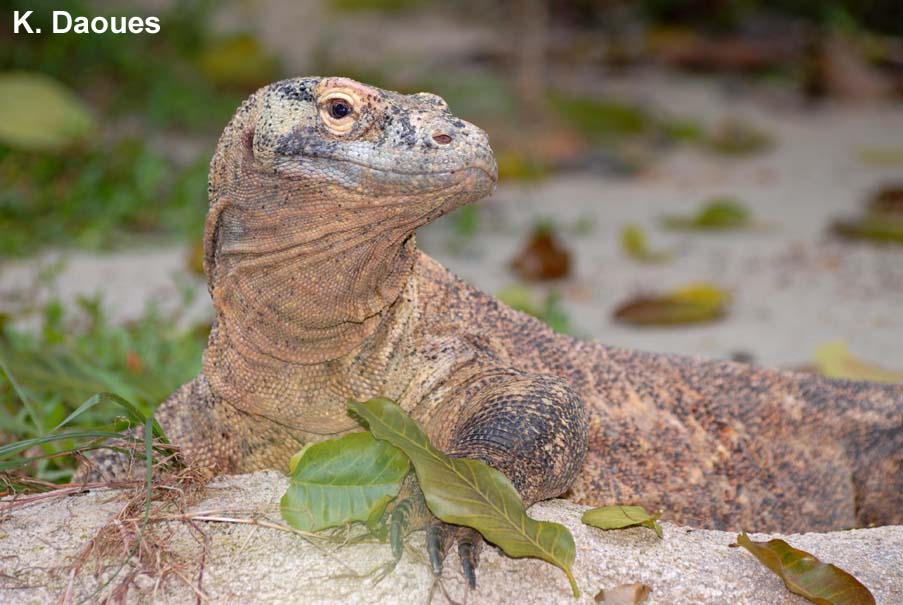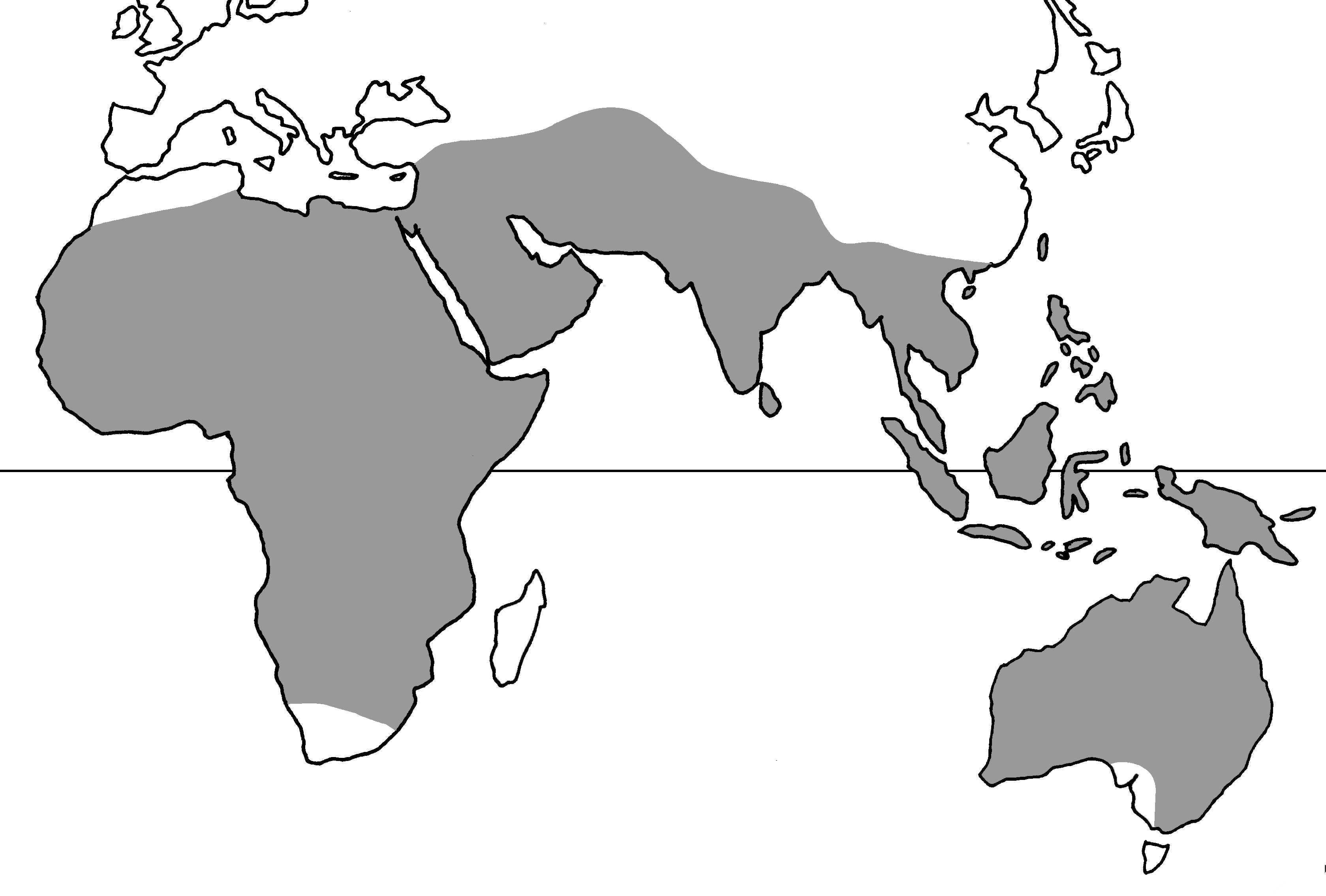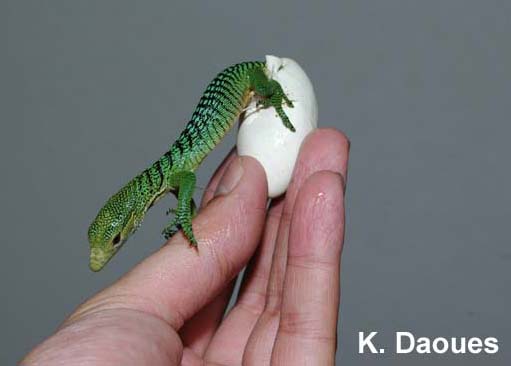
The Komodo dragon, Varanus komodoensis.
Notwithstanding, the morphological amplitude within this group is remarkable. While the smallest species, V. brevicauda from Australia, measures only 23 cm from snout to tip of tail at a maximal weight of merely 20 g, the Southeast Asian water monitor, V. salvator, reaches a total length of more than three meters. However, the most infamous member of all varanids, and definitively the most bulky one, is V. komodoensis endemic to a restricted area within the Lesser Sunda Island chain of Indonesia. This charismatic species may grow up to three meters in length and weighs as much as 54 kg. Ecologically, the diversity of monitor lizards is even higher. They are found from deserts to tropical rain forests, from coasts up to mountain areas, being semi-aquatic, terrestrial or arboreal. Although mostly carnivorous, two Philippine species (V. olivaceus and V. mabitang) are even vegetarians.

